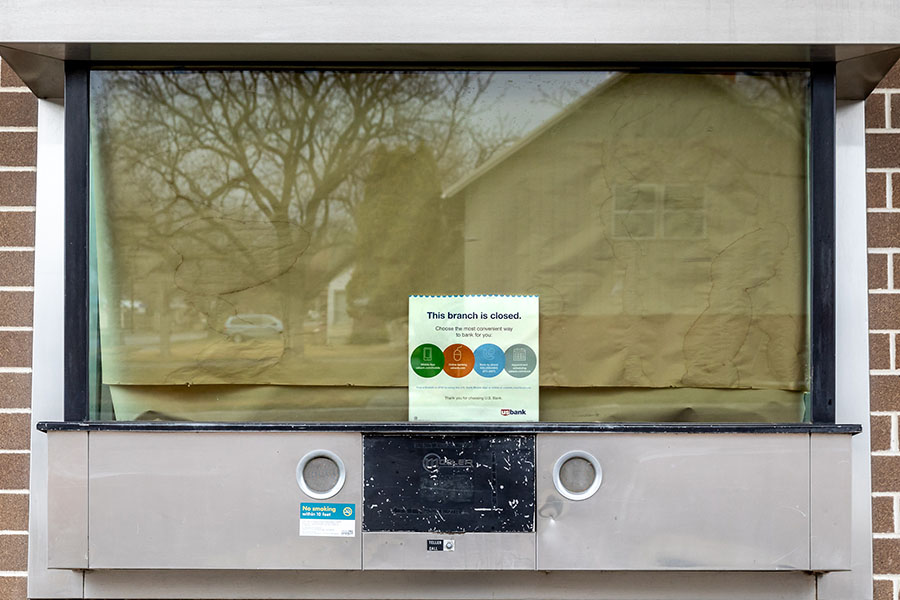Oregon has lost among the most bank locations, as closures continue around the U.S.
Bank branches continue to close, leaving many rural Oregon communities with fewer options.
The nation’s largest banks — Bank of America, US Bank, Capital One, Wells Fargo — are rapidly closing locations around the country. Last year, 2,454 branches closed, according to S&P Global Market Intelligence. The number of U.S. bank branches has shrunk by more than one-fifth since 2009. This year, more than 400 have closed so far. Wells Fargo is moving the fastest, with 88 closure filings so far in 2024, according to The Wall Street Journal.
In May, The Oregonian analyzed federal bank data, finding that across the state, 350 branches closed between 2013 and 2023, leaving around 747. Grant and Klamath counties lost the most, around 40% of their branches in that time. Not far behind were Multnomah, Josephine and Lane counties, which lost 39%.
Oregon consistently ranks near the top of states in bank branch closures, and between 2017 and 2021, the Portland metro area saw the most branch closures of any metro area, according to the National Community Reinvestment Coalition.
The shift has seen rural bank customers driving further to conduct regular business, and some towns, like Nyssa, without a branch at all, Oregon Business reported in 2022.
Large-scale closures began around the time of the Great Recession but picked up during the COVID-19 pandemic. The cause is multivariate with mergers and acquisitions, inflation, interest rates and the rise of online banking all said to be contributing factors. With these factors not likely to disappear any time soon, branch closures will likely continue apace.
Bank customers now conduct much more business online and through mobile apps, where interest rates are higher and fees lower. Some banks attribute their branch closures to changing client preferences. They say that as they close and consolidate branches, they try to improve digital offerings.
But in-person banking still serves an important function, especially in small communities, where they supply change for the cash register and instruction on financial literacy. Small business owners regularly deposit their revenue in the form of cash or checks and often require services beyond simple transactions. Younger bank customers visit in-person for help with debt and student loans. Rural and older customers appear to prefer banking with the personal touch of a human teller to an automated one, according to survey results of the Federal Deposit Insurance Corporation. And many banks now employ tellers who speak Spanish.
Rural banks also help individuals and small businesses in low-income areas access credit. Individuals and small businesses establish lines of credit and ultimately pursue larger loans after demonstrating a history of cash flow. The National Community Reinvestment Coalition notes that lending decreases in an area when bank branches close.
According to a study by Rural Development Initiatives, 32% of rural communities do not have a bank.
The Oregonian reports the trend appears to have slowed somewhat. Last year’s loss of 40 branches is less than half the state lost at the height of the pandemic in 2020. At the same time, only eight new bank or credit union locations opened in 2023.
Click here to subscribe to Oregon Business.




